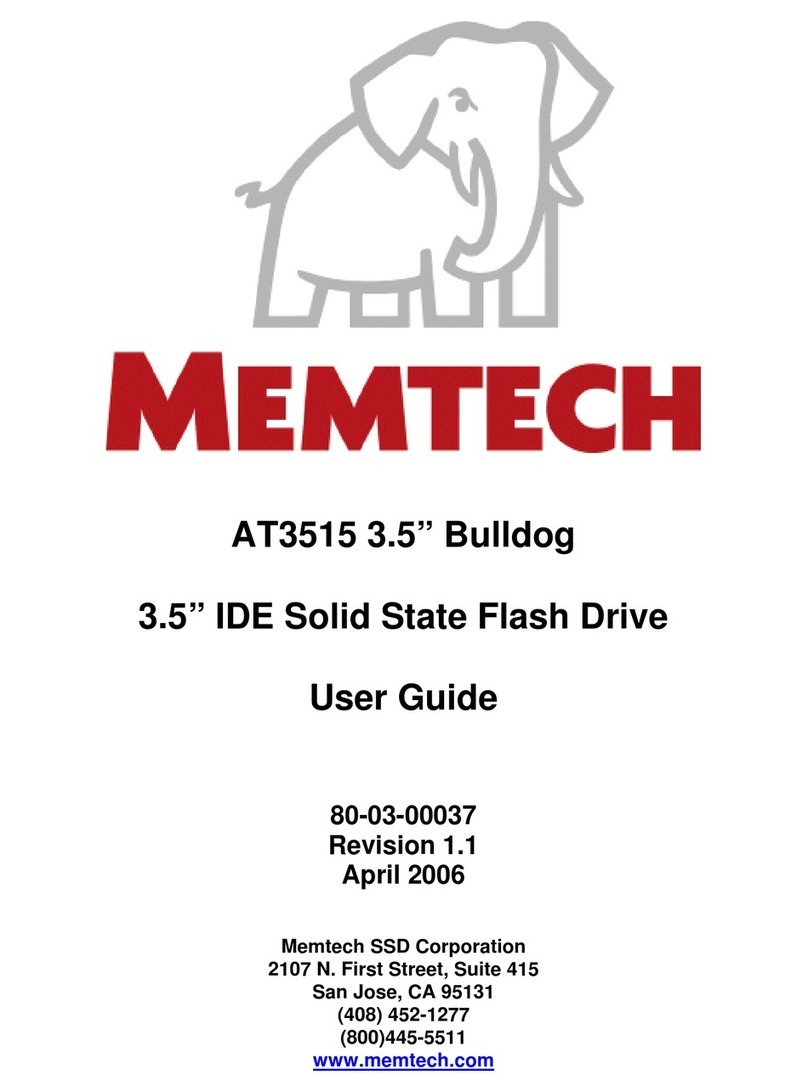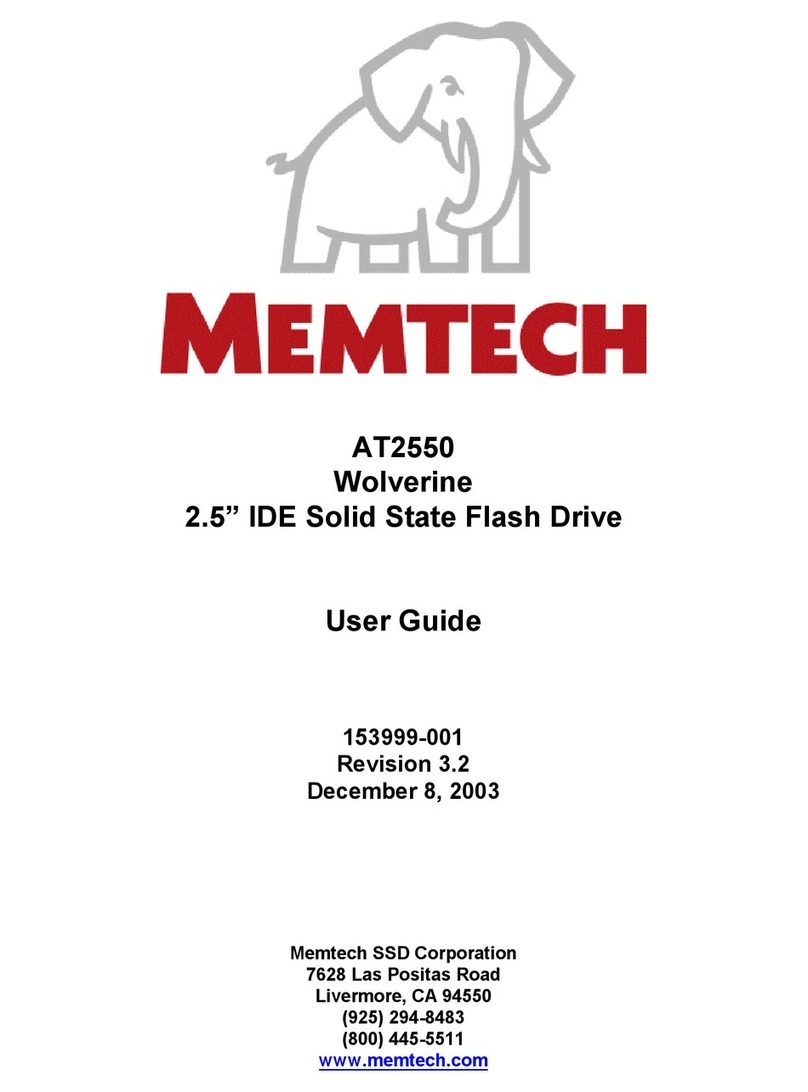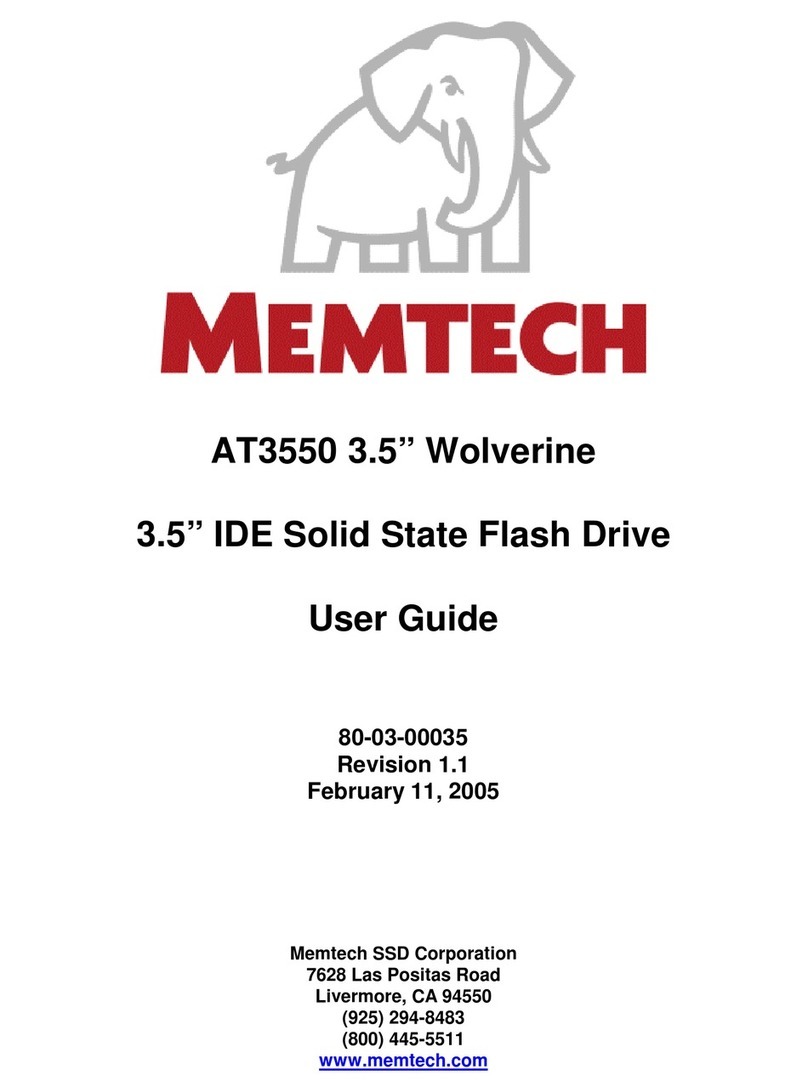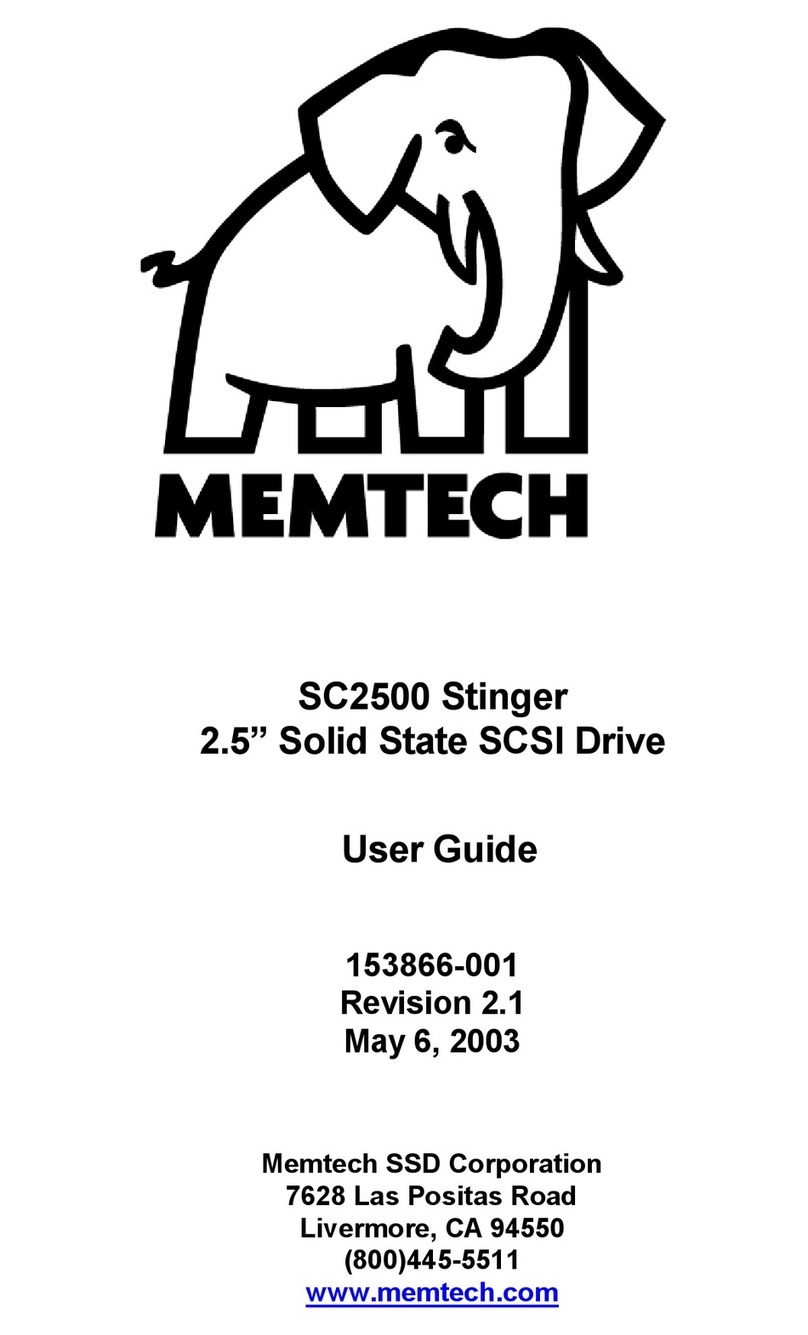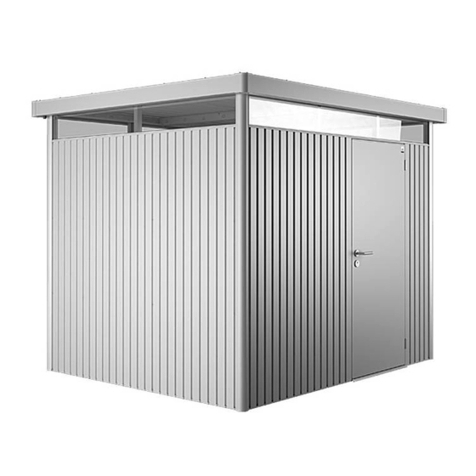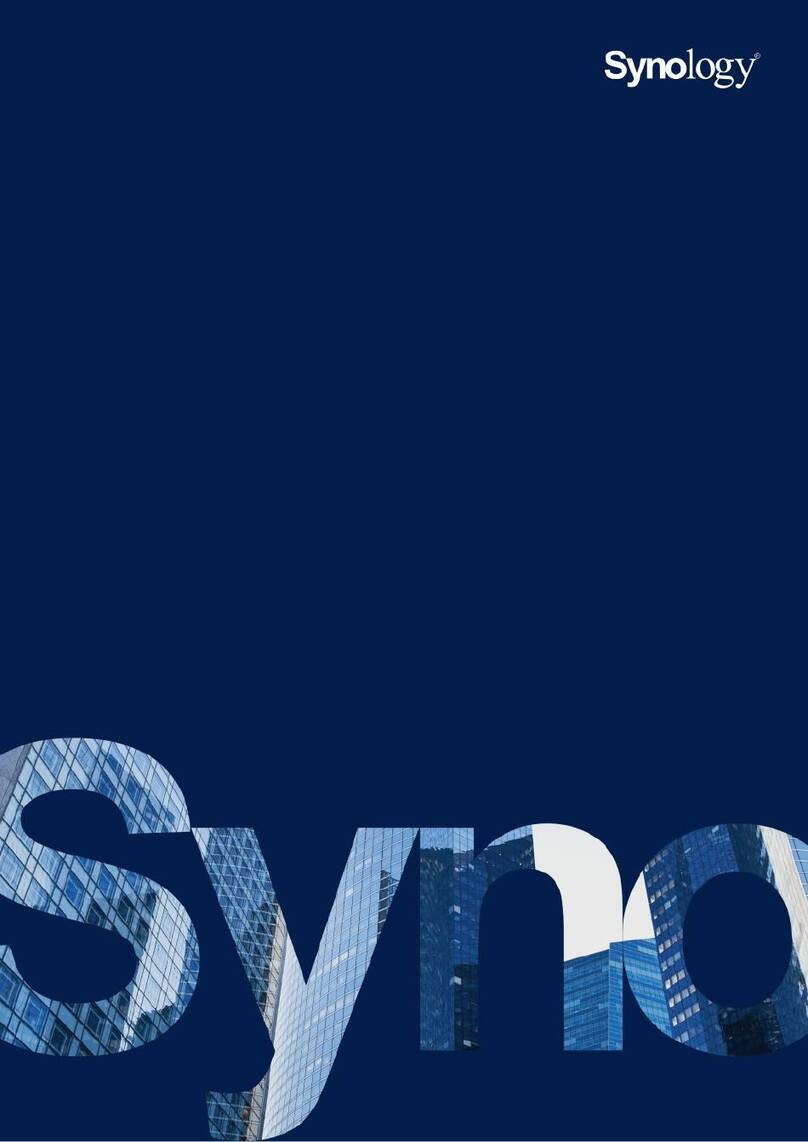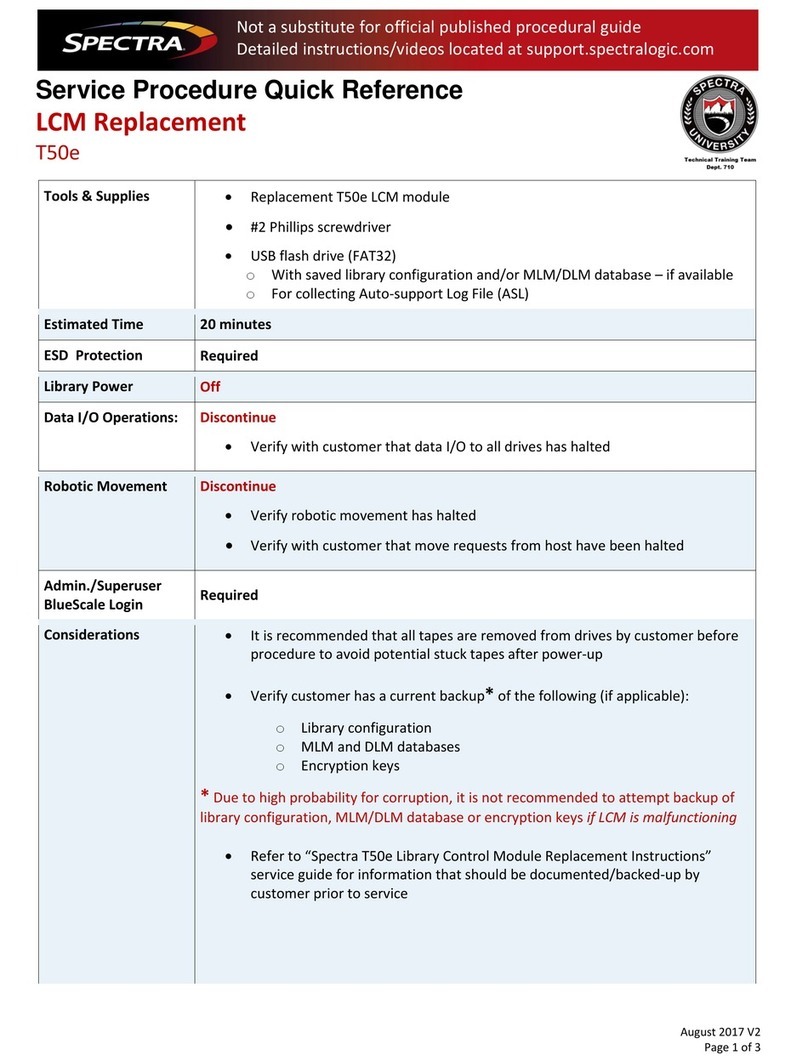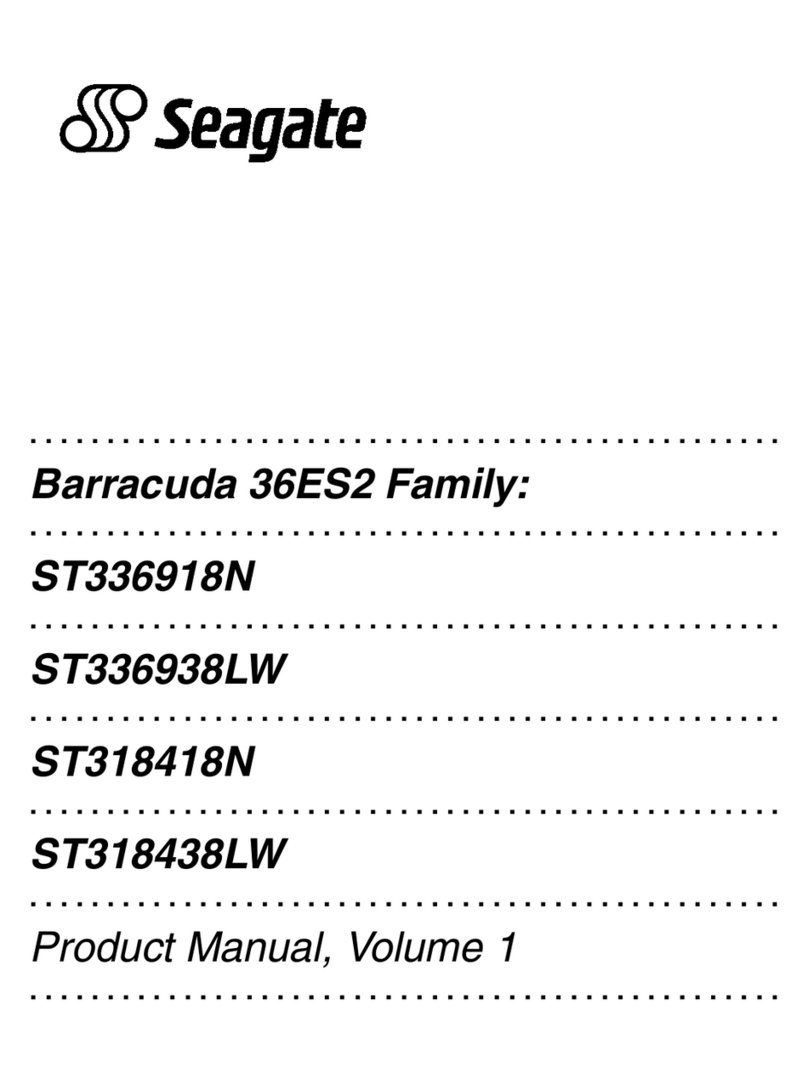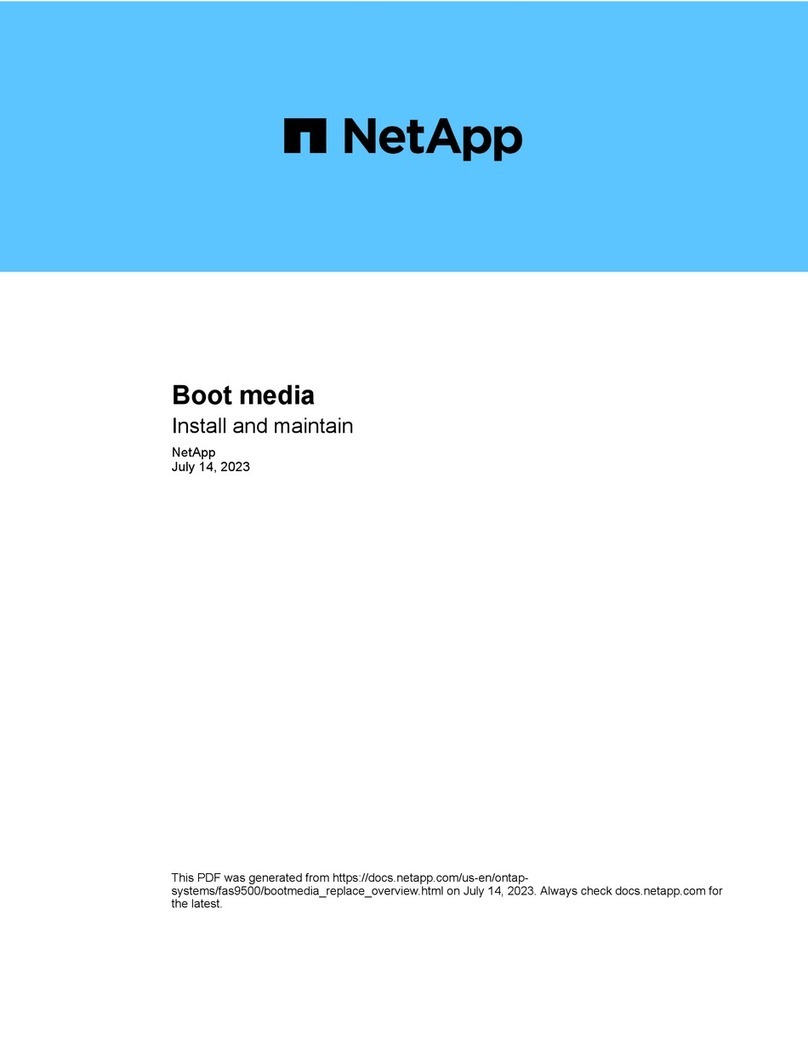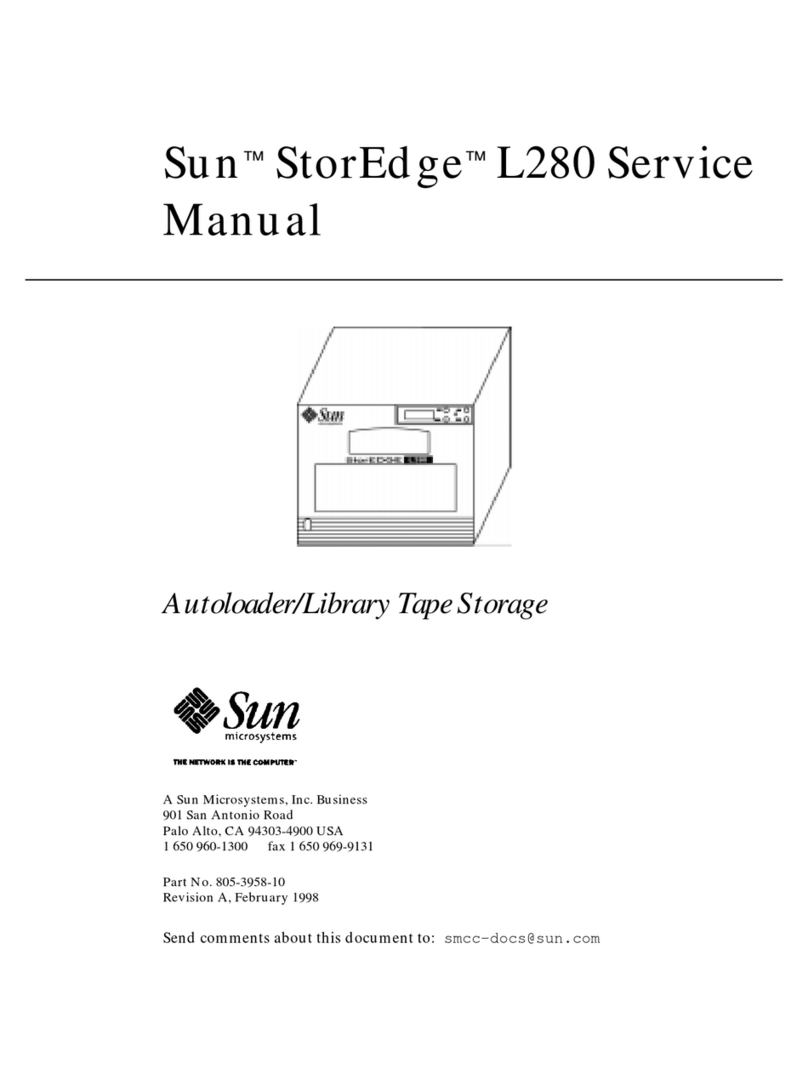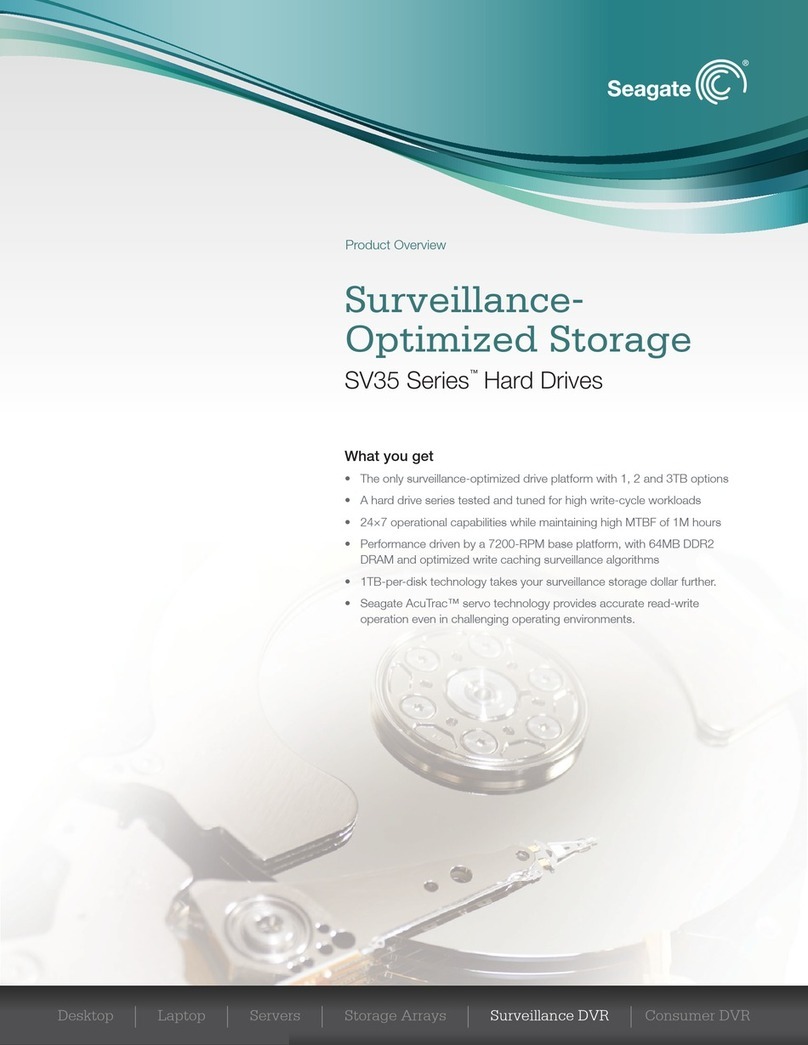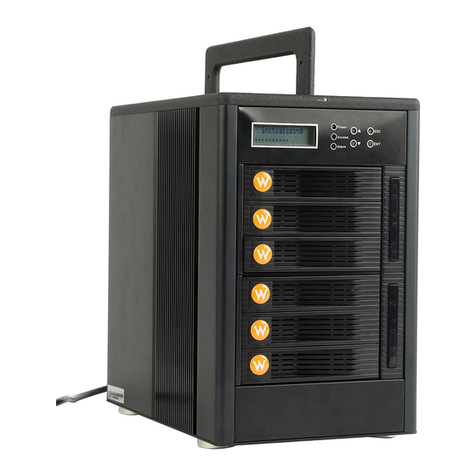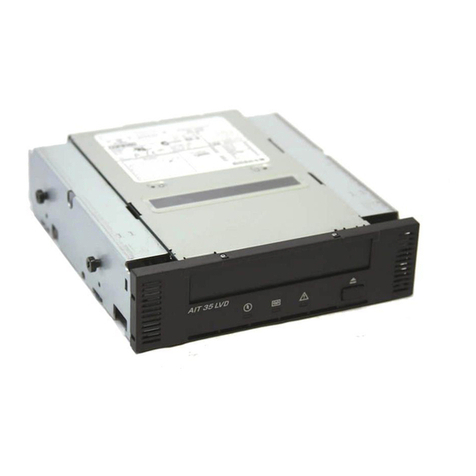Memtech SC35 Mastodon User manual

SC35 Mastodon
3.5” Solid State SCSI Drive
User Guide
153205-001
Revision 4.8
July 30, 2002
Memtech SSD Corporation
7628 Las Positas Road
Livermore, CA 94550
(800)445-5511
www.memtech.com

SC35 User Guide Ver 4.8 August 30, 2002 Page 2of 25
Table Of Contents
1. HIGHLIGHTS 3
2. INTRODUCTION 3
3. GENERAL DESCRIPTION 4
3.1 SCSI Interface 4
3.2 SCSI Commands 5
4. GENERAL SPECIFICATIONS 19
5. INSTALLATION 20
5.1 Default Configuration 20
5.2 Hardware Installation Procedure 20
5.3 Power and Cable Attachments 21
5.4 Software Installation Procedure 21
6. JUMPER CONFIGURATION 22
6.1 Switch Locations 22
6.2 SCSI ID Selection 23
6.3Write Protection 23
6.4 Termination 23
6.5 Jumper Definitions 23
6.6 Memory Size 23
7. TROUBLE SHOOTING GUIDE 24
7.1 Error Blink Codes -24
7.2 Warning Blink Codes –24
7.3 Red LED on steady at power-up-24
7.4 Unit does not respond to SCSI commands -24
8. APPENDIX 25
8.1 Contact Information 25
8.2 SCSI specification information 25
8.3 Limited Lifetime Warranty 25

SC35 User Guide Ver 4.8 August 30, 2002 Page 3of 25
1. HIGHLIGHTS
•27648 Mbyte uncompressed capacity
•Full -40oC to +85oC operating temp range
•Active Remap™ Wear Leveling Technology
•Unmatched SCSI-II compatibility
•On-board active termination
•5 volt, low power operation
•Completely solid state -no moving parts
•500G operating shock
•10G operating vibration
•Rugged, 3.5” half height drive formfactor
•Single-ended 50 pin SCSI interface
•0.7 millisecond random access time
•1.5 Mbyte/sec sustained Read throughput
•650 Kbyte/sec sustained Write throughput
•10 year guaranteed data integrity
•NO installable device drivers
2. INTRODUCTION
The SC35 series is a line of 100% compatible SCSI-II solid state drives in a
3.5-inch half-height format. It is completely solid state, with no moving
parts. This accounts for the unit’s exceptional ruggedness and wide
operating temperature range.
Sector Erasable NAND E2PROM (Flash) in 128 Mbit to 1 Gbit
configurations are used to provide up to 27648 Mbytes of nonvolatile, solid
state storage in an extremely small, rugged form factor. The drive is 100%
SCSI compatible and requires no special drivers to operate. It is essentially
a drop in replacement for standard rotating media.
The SC35 can be used in applications where operating conditions are harsh
and when reliability is critical. A 100% CMOS logic design minimizes power
consumption, and the +5 volt only power requirement simplifies system
supply needs, as +12 volts is not necessary. An on-board microprocessor
implements all control functions, and oversees SCSI communications via a
53C90A SCSI-II processor. The microprocessor performs all power up
diagnostics, data transfers, and error handling in the unit. The SC35 can
sustain a 1.5 Mbyte per second read throughput and 650 Kbyte per second
write throughput. The unit responds to all Direct-Access device commands,
and as with all single-ended SCSI units, the SC35 may be placed up to 18
feet (6 m) from the host SCSI controller. Data integrity is maintained using
Memtech’s proprietary Active Remap™ technology.
The drive is available in capacities ranging from 128 Mbytes to 27648
Mbytes. Please contact the factory with your requirements. Disk
compression utilities may be used to effectively double the usable capacity
of the drive. Every drive is fully tested under environmental extremes,
which guarantees data integrity under even the harshest conditions.

SC35 User Guide Ver 4.8 August 30, 2002 Page 4of 25
3. GENERAL DESCRIPTION
3.1 SCSI Interface
An intelligent SCSI controller from NCR, the 53C90A, handles the SCSI
interface for the SC35. The 53C90A is SCSI-I and SCSI II compliant, and
automates much of the interface overhead. It has a 16 byte FIFO, a DMA
interface, and numerous command and control registers.
The SC35 employs the following attributes:
1. Single-ended drivers
2. Termination power derived from cable
3. Parity on the interface
4. "Hard" RESET implemented
5. No reservation queuing
The SC35 has implemented all mandatory SCSI-I and SCSI-II commands
and several optional commands to enhance functionality. The following is a
list of commands and their equivalent hexadecimal representation.
1. Test Unit Ready 00h M
2. Rezero Unit 01h O
3. Request Sense 03h M
4. Format Unit 04h M
5. Read 08h M
6. Write 0Ah O
7. Inquiry 12h M
8. Reserve Unit 16h M
9. Release Unit 17h M
10. Mode Sense 1Ah O
11. Send Diagnostics 1Dh M
12. Read Capacity 25h M
13. Extended Read 28h M
14. Extended Write 2Ah O
15. Erase 2Ch O
16. Verify 2Fh O
Notes: O = Optional M = Mandatory
The implemented messages on the SC35 are as follows:
1. Command Complete 00h Generated
2. Extended Message 01h Both
3. Init Detected Error 05h Received
4. Abort 06h Received
5. Message Reject 07h Generated
6. NoOp Message 08h Received
7. Message Parity Error 09h Received
8. Bus Device Reset 0Ch Received
9. Identify 80h Received

SC35 User Guide Ver 4.8 August 30, 2002 Page 5of 25
3.2 SCSI Connector
The SC35 uses a 50-pin right angle 0.1 inch center connector
mounted on the PCB to create both a power and signal connection to
the host. Maximum cable length is 6 meters. The diagram below
depicts connector orientation and location.
3.2.1 SCSI Connector Physical Orientation
Pin #1

SC35 User Guide Ver 4.8 August 30, 2002 Page 6of 25
3.2.2 SCSi Connector Pinout
The following shows the pin connections for the SCSI connector used on the
SC35.
PIN SIGNAL PIN SIGNAL
1GROUND 2DB0
3GROUND 4DB1
5GROUND 6DB2
7GROUND 8DB3
9GROUND 10 DB4
11 GROUND 12 DB5
13 GROUND 14 DB6
15 GROUND 16 DB7
17 GROUND 18 DBP
19 GROUND 20 GROUND
21 GROUND 22 GROUND
23 RSVD 24 RSVD
25 GROUND 26 TERMPWR
27 RSVD 28 RSVD
29 GROUND 30 GROUND
31 GROUND 32 ATN
33 GROUND 34 GROUND
35 GROUND 36 BSY
37 GROUND 38 ACK
39 GROUND 40 RST
41 GROUND 42 MSG
43 GROUND 44 SEL
45 GROUND 46 C/D
47 GROUND 48 REQ
49 GROUND 50 I/O
3.3 SCSI Commands
3.3.1 Test Unit Ready Command –00h
Test Unit Ready CDB
The TEST UNIT READY command provides a means to check if the logical unit
is ready. This is not a request for a self-test. If the logical unit would accept an

SC35 User Guide Ver 4.8 August 30, 2002 Page 7of 25
appropriate medium-access command without returning CHECK CONDITION
status, this command shall return a GOOD status. If the logical unit cannot
become operational or is in a state such that an initiator action is required to
make the unit ready, the target shall return CHECK CONDITION status with a
sense key of NOT READY.
3.3.2 Rezero Unit Command –01h
Rezero Unit CDB
The REZERO UNIT command requests that the target set the logical unit to a
specific state. This is implemented on the SC35 as a NOP command and has no
effect other than to verify the CDB.

SC35 User Guide Ver 4.8 August 30, 2002 Page 8of 25
3.3.3 Request Sense Command –03h
Request Sense CDB
The REQUEST SENSE command requests that the SC35 transfer sense data to
the initiator. If the SC35 has no sense data available to return, it will return a
sense key of NO SENSE and an additional sense code of NO ADDITIONAL
SENSE INFORMATION. The sense data shall be preserved by the target for the
initiator until retrieved by a REQUEST SENSE command or until the receipt of
any other I/O process for the same I_T_x nexus. Sense data shall be cleared
upon receipt of any subsequent I/O process (including REQUEST SENSE) to
the same I_T_x nexus.
The target shall return CHECK CONDITION status for a REQUEST SENSE
command only to report exception conditions specific to the command itself. For
example: a) A non-zero reserved bit is detected in the command descriptor
block;
b) An unrecovered parity error is detected on the data bus;
c) A target malfunction prevents return of the sense data.
If a recovered error occurs during the execution of the REQUEST SENSE
command, the target shall return the sense data with GOOD status. If a target
returns CHECK CONDITION status for a REQUEST SENSE command, the
sense data may be invalid.
The SC35 is capable of returning eighteen bytes of data in response to a
REQUEST SENSE command. If the allocation length is eighteen or greater, and
the SC35 returns less than eighteen bytes of data, the initiator should assume
that the bytes not transferred would have been zeros had the target returned
those bytes. Initiators can determine how much sense data was returned by
examining the allocation length parameter in the command descriptor block and
the additional sense length in the sense data.
The sense data format for error codes 70h (current errors) and 71h (deferred
errors) are defined below. For further details on the Request Sense command,
please refer to the SCSI specification.

SC35 User Guide Ver 4.8 August 30, 2002 Page 9of 25
Sense data format

SC35 User Guide Ver 4.8 August 30, 2002 Page 10 of 25
3.3.4 Format Unit Command –04h
The FORMAT UNIT command formats the medium into initiator addressable
logical blocks per the initiator-defined options. In addition, the medium may be
certified and control structures may be created for the management of the
medium and defects.
Format Unit CDB
Only the simplest and mandatory forms of the FORMAT UNIT command (with no
format data) are implemented on the SC35. This routine accomplishes medium
formatting with little initiator control over defect management.
The FORMAT UNIT command shall be rejected with RESERVATION
CONFLICT status if the logical unit is reserved, or any extent reservation, from
any initiator, is active in the specified logical unit. During the execution of the
FORMAT UNIT command, the SC35 may perform a medium defect
management algorithm.
A FmtData bit of zero indicates that a DATA OUT phase shall not occur. The
source of defect information is not specified. This is the only form of the
command the SC35 supports.
A complete list (CmpLst) bit of one indicates that the defect list sent by the
initiator is a complete list of defects. The existing defect list is discarded by the
SC35 and a new primary defect list is constructed. A CmpLst bit of zero
indicates that the current defect list should be maintained. As a result a new
primary is constructed that contains the existing list and any new defects the
SC35 may add during the format operation.

SC35 User Guide Ver 4.8 August 30, 2002 Page 11 of 25
3.3.5 Read (6) Command –08h
The READ (6) command requests that the SC35 transfer data to the initiator.
The most recent data value written in the addressed logical block shall be
returned.
Read (6) CDB
The logical block address field specifies the logical block at which the read
operation shall begin. The transfer length field specifies the number of
contiguous logical blocks of data to be transferred. A transfer length of zero
indicates that 256 logical blocks shall be transferred. Any other value indicates
the number of logical blocks that shall be transferred.
3.3.6 Write (6) Command –0Ah
The WRITE (6) command requests that the target write the data transferred by
the initiator to the medium.
Write (6) CDB
The logical block address field specifies the logical block at which the write
operation shall begin.
The transfer length field specifies the number of contiguous logical blocks of
data to transfer. A transfer length of zero indicates that 256 logical blocks shall
be transferred. Any other value indicates the number of logical blocks that shall
be transferred.

SC35 User Guide Ver 4.8 August 30, 2002 Page 12 of 25
3.3.7 Inquiry Command –12h
The INQUIRY command requests that information regarding parameters of the
SC35 be sent to the initiator.
Inquiry CDB
An enable vital product data (EVPD) bit of one specifies that the SC35 return the
optional vital product data specified by the page code field. If any optional fields
in the CDB are set that the SC35 does not support, it will return a CHECK
CONDITION status with the sense key set to ILLEGAL REQUEST and an
additional sense code of INVALID FIELD IN CDB.
An EVPD bit of zero specifies that the SC35 return the standard INQUIRY data.
If the page code field is not zero, the target shall return CHECK CONDITION
status with the sense key set to ILLEGAL REQUEST and an additional sense
code of INVALID FIELD IN CDB. The page code field specifies which page of
vital product data information the SC35 return.
The INQUIRY command shall return CHECK CONDITION status only when the
target cannot return the requested INQUIRY data. The INQUIRY data should be
returned even though the peripheral device may not be ready for other
commands. If an INQUIRY command is received from an initiator with a
pending unit attention condition, the SC35 will perform the INQUIRY command
and not clear the unit attention condition.

SC35 User Guide Ver 4.8 August 30, 2002 Page 13 of 25
Standard Inquiry Data Format
Please refer to the SCSI specification for further details on the vital product data
pages and formats.

SC35 User Guide Ver 4.8 August 30, 2002 Page 14 of 25
3.3.8 Reserve Unit –16h
The RESERVE command is used to reserve a logical unit or, if the extent
reservation option is implemented, extents within a logical unit.
Reserve CDB
3.3.9 Release Unit –17h
The RELEASE command is used to release a previously reserved logical unit,
or, if the extent release option is implemented, to release previously reserved
extents within a logical unit.
Release CDB

SC35 User Guide Ver 4.8 August 30, 2002 Page 15 of 25
3.3.10 Mode Sense
The MODE SENSE (6) command provides a means for a target to report
parameters to the initiator. It is a complementary command to the MODE
SELECT (6) command.
Mode Sense CDB
A disable block descriptors (DBD) bit of zero indicates that the target may return
zero or more block descriptors in the returned MODE SENSE data, at the
target’s discretion. A DBD bit of one specifies that the target shall not return any
block descriptors in the returned MODE SENSE data. The page control (PC)
field defines the type of mode parameter values to be returned in the mode
pages. The page code specifies which mode page to return.
3.3.11 Send Diagnostics –1Dh
The SEND DIAGNOSTIC command requests that the SC35 perform diagnostic
operations on itself. The only mandatory implementation of this command is the
self-test feature with the parameter list length of zero.
Send Diagnostics CDB

SC35 User Guide Ver 4.8 August 30, 2002 Page 16 of 25
3.3.12 Read Capacity –25h
The READ CAPACITY command provides a means for the initiator to request
information regarding the capacity of the logical unit.
Read Capacity CDB
3.3.13 Extended Read (10) –28h
The READ (10) command requests that the target transfer data to the initiator.
The most recent data value written in the addressed logical block is returned.
Read (10) CDB

SC35 User Guide Ver 4.8 August 30, 2002 Page 17 of 25
3.3.14 Extended Write (10)
The WRITE (10) command requests that the SC35 write the data transferred by
the initiator to the medium.
Write (10) CDB

SC35 User Guide Ver 4.8 August 30, 2002 Page 18 of 25
3.3.15 Erase Command
Erase CDB
The ERASE (10) command requests that the target erase the specified number
of blocks starting at the specified logical block address on the medium. As used
here, erased means the medium shall be erased. The previous data recorded
on the medium, if any, shall not be recoverable. The Remap Tableis retained,
thus allowing write and read access to the memory.
The erase all (ERA) bit set to one indicates that all blocks on the medium shall
be erased. If the ERA bit is set to one and if the number of blocks is not zero, the
SC35 will return CHECK CONDITION, and the sense key shall be set to
ILLEGAL REQUEST, with an additional sense code of INVALID FIELD IN CDB.
If the ERA bit is zero a transfer length of zero indicates that no blocks shall be
erased. This condition is not considered an error and no data is erased. Any
other value indicates the number of logical blocks that shall be erased.
A note about the Erase Command –
The erase command has been implemented as a security erase mechanism on
the SC35. When executed with ERA set, a 768 Mbyte drive can be wiped clean
in under 10 seconds. All storage locations on the drive are erased, including
both user and system (protected) data areas. At the conclusion of the erase
command, the existing Remap Table™is restored to memory. If you wish to
wipe the Remap Table™information as well, please contact the factory for
implementation instructions.

SC35 User Guide Ver 4.8 August 30, 2002 Page 19 of 25
4. GENERAL SPECIFICATIONS
Interface
SCSI Compatibility ANSI X3.131-1994
SCSI Device Type 0 -Direct Access Device
Maximum Capacity 27648 Mbytes
Bytes/Block 512
Bus Width 8 bits
Termination Active –on board
Data Transfer Specifications
Bus width 1 byte (8 bits)
Read Transfer Rate 1.5 Mbyte/sec., sustained
Write Transfer Rate 650 Kbytes/sec sustained
Data Access time 0.7 msec
Environmental Requirements
Operating Ambient Temperature
Commercial 0oC to +70oC
Extended -20oC to +75oC
Industrial -40oC to +85oC
Storage Temperature -55oC to +125oC Ambient
Humidity 5% to 95% non-condensing
Airflow Requirements none
Ceiling no limit
Mechanical (Full Capacity)
Length 15.24cm (6.00 in.)
Width 10.16cm (4.00 in.)
Max Height 03.68cm (1.45 in.)
Drive Form Factor 3.5" half height drive
Mounting Considerations None (any orientation)
Max Weight 18.5 ounces (525 grams)
Power Requirements
Vcc Supply +5.00 volts +/-5%
Vdd Supply Not Used
Power Idle 0.50 watts
Power Active 0.90 watts
Power Max 1.10 watts

SC35 User Guide Ver 4.8 August 30, 2002 Page 20 of 25
5. INSTALLATION
5.1 Default Configuration
The default jumper switch configuration is given below. Always power down
the unit before changing the SCSI ID or write protect switches. Changing
these settings with power applied may result in the changes not being
recognized.
New with this revision is the addition of a jumper block on the front of the drive.
Please refer to the diagram below for the location of the block. Settings can
be made from either the switch located near the power connector, or the
jumper block. Setting either a switch on or placing a jumper on a block will
result in that setting being enabled. See definitions below.
DEFAULT JUMPER SWITCH CONFIGURATION
a. SCSI ID: Device 0
ID0 -ON Switch pos. 1 on E1 on
ID1 -ON Switch pos. 2 on E2 on
ID2 -ON Switch pos. 3 on E3 on
b. Writes: Enabled
WP* -OFF Switch pos. 4 off E4 off
c. Termination: Disabled E5 off
5.2 Hardware Installation Procedure
5.2.1 Verify that the drive is configured as required by the application.
Many SCSI controllers require that the system disk be addressed as device
0 or 1 on the SCSI bus. If a different ID is required, refer to section 6 for
proper switch settings.
5.2.2 Power off the computer system by throwing the main power switch.
5.2.3 Disconnect the AC power cord from the computer system.
5.2.4 Open the system to allow access to the drive bays and the card slots
as required.
5.2.5 If a SCSI initiator is not already installed in the system or on the
motherboard, then install that card.
5.2.6 Install the SC35 into a standard 3 1/2" drive bay, or using adapter
hardware, place the unit into a 5 1/4" drive bay. Any mounting orientation
is acceptable.
5.2.7 Attach the 50-pin flat ribbon connector from the SCSI initiator to the
SC35. If multiple devices are to be attached to the SCSI bus, then remove
any terminating resistors or disable active termination on those units not
at the END of the cable. Only the two devices at the ends of the SCSI bus
should have termination enabled. Failure to comply with this requirement
may cause erroneous operation of the SCSI bus.
Table of contents
Other Memtech Storage manuals
Popular Storage manuals by other brands
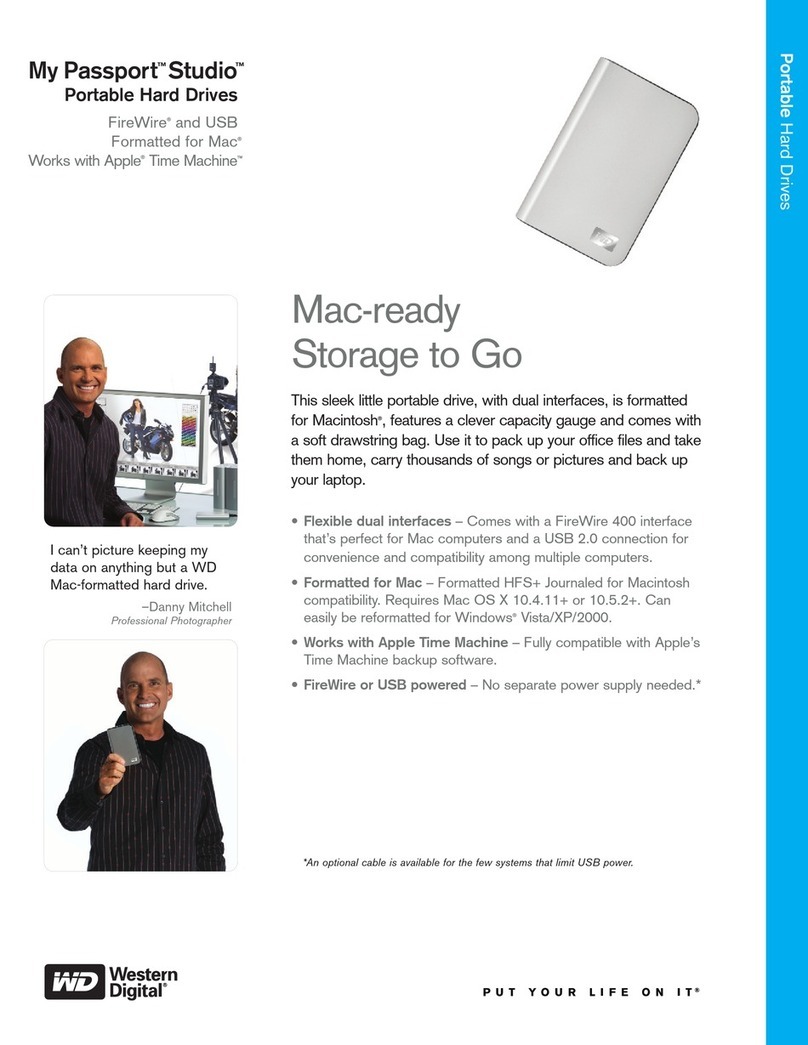
Western Digital
Western Digital WDMS2500 - My Passport Studio Specifications

Western Digital
Western Digital Caviar Black WD7502AAEX Product features
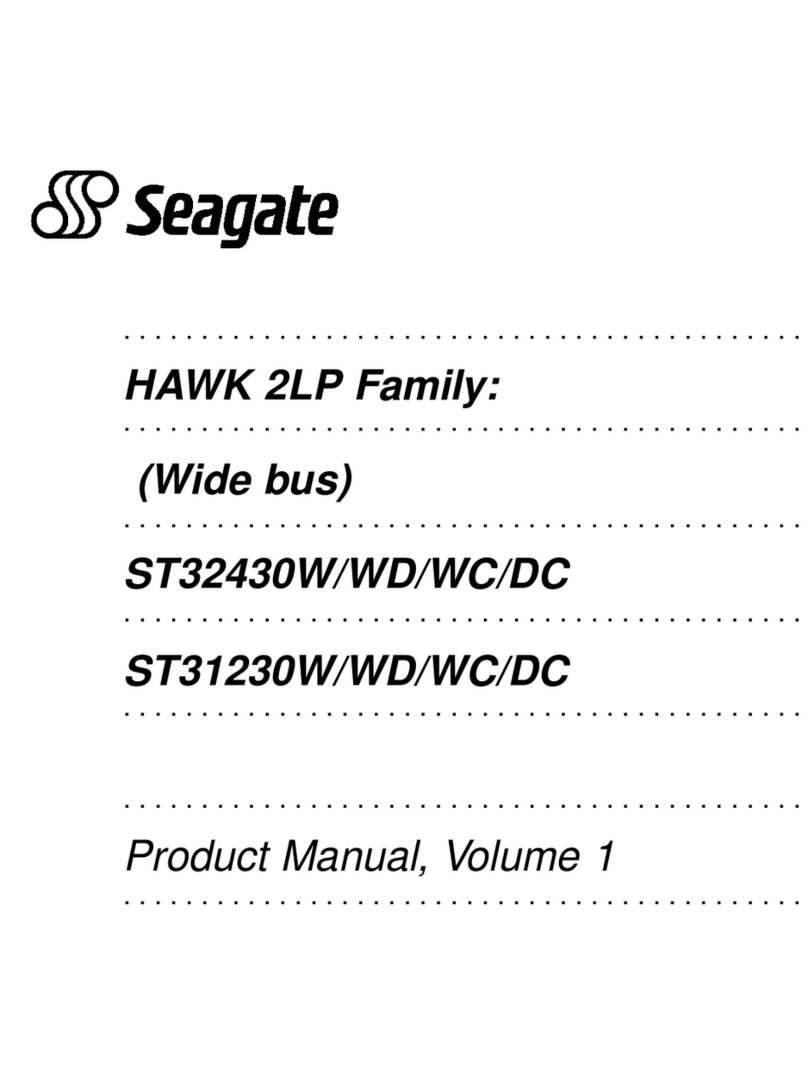
Seagate
Seagate ST32430W product manual
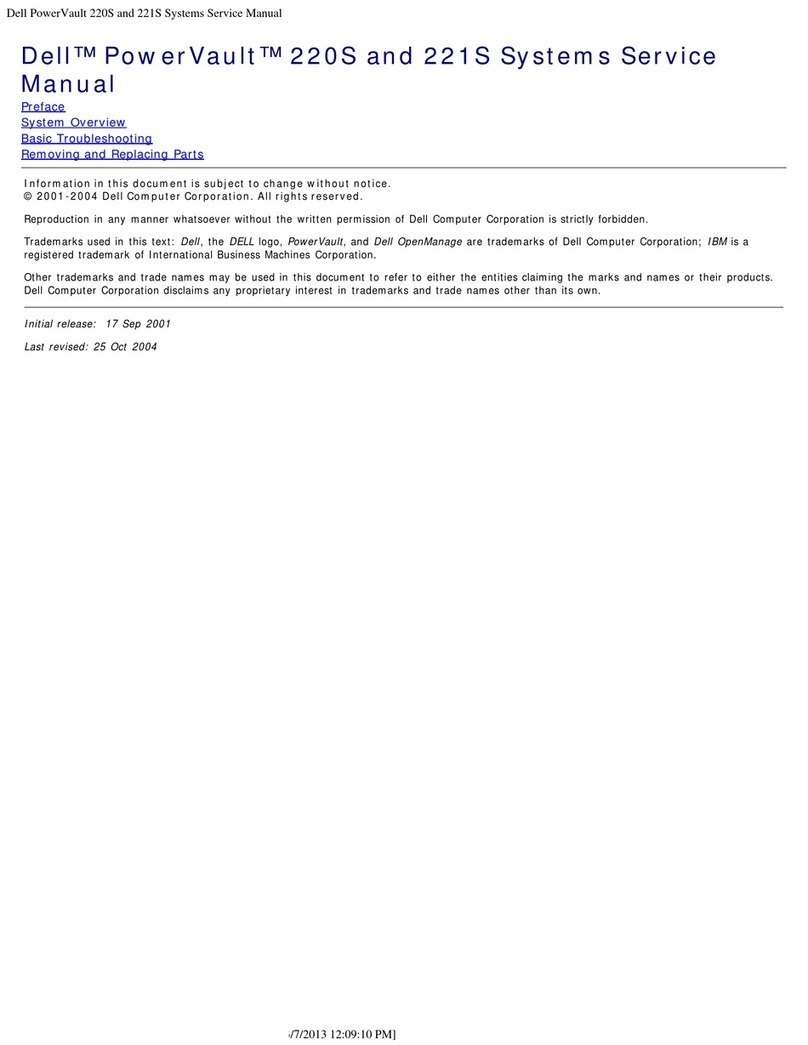
Dell
Dell PowerVault 220S Service manual

Nexsan
Nexsan U2G460 quick start guide
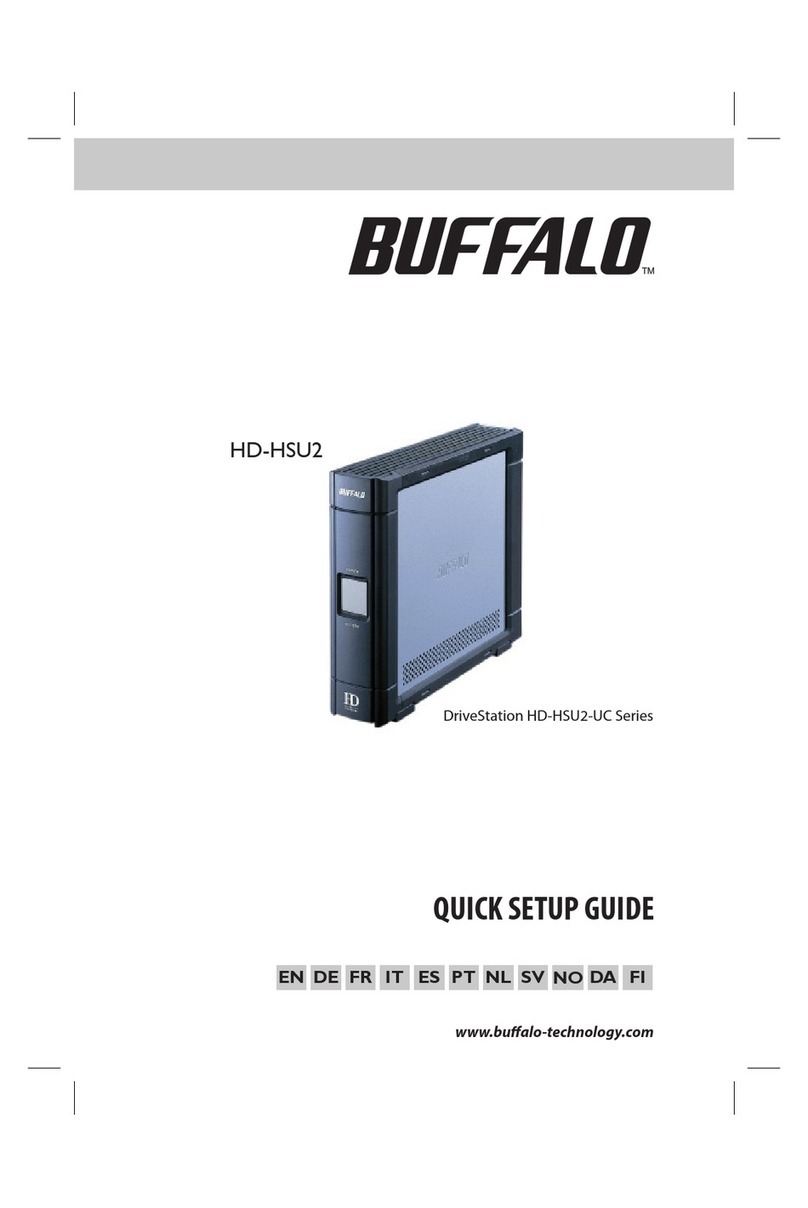
Buffalo
Buffalo DriveStation HD-HSU2-UC Series Quick setup guide
